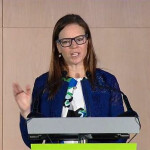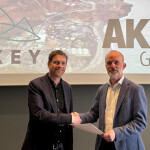In 2009, SeafoodSource interviewed a plethora of seafood industry insiders, from chefs to activists to aquaculture experts. Here’s a rundown of this year’s five most-read Q&As:
5) Mal Wittenberg: The CEO of Micro Analytical Systems talked about his San Rafael, Calif., company’s development of technology and equipment to measure the level of mercury found in fish in a timely and cost-effective manner.
“The mercury-in-fish issue isn’t going away. There are those in the seafood industry that wish it would. We certainly wish it would, from the standpoint of [public] health. But then there are those in the industry that believe that best way to approach this problem is to deal with it head-on. And then logistically, we’re able to do things now that we weren’t able to do in the past. We have more equipment; the equipment is in its third generation now. It’s extremely robust and can now operate in far-off locations with less babysitting.”
4) Peter Redmond: The Global Aquaculture Alliance’s VP of development, administration and communications discussed the importance of aquaculture certification standards and how Walmart, the world’s largest retailer and his former employer, changed its view on sourcing seafood.
“[Aquaculture standards] are critical … for us as an industry to have something in place to make sure there are no knee-jerk reactions down the line. I like what the New England Aquarium says, which is to go out and adopt a certification program, but they don’t say which one. As General Patton once said, ‘I’ll take a good plan today versus a great plan tomorrow.’”
3) Wade Wiestling: The Oceanaire Seafood Room’s VP of culinary development discussed the recession’s effect on the foodservice industry and what his Minneapolis-based upscale seafood chain is doing to keep customers coming through the doors. About a month later, Oceanaire filed for Chapter 11 bankruptcy protection and closed four restaurants.
“There’s so much gloom and doom out there that we thought this was a smart thing to do,” said Wiestling, referring to Oceanaire’s USD 20.10 three-course dinner promotion.
2) Greg Griffie: The executive chef of 606 Congress in the Renaissance Boston Waterfront Hotel in Boston talked about his growing interest in sustainable seafood.
“Although I have been buying sustainable poultry and pork for years, I didn’t feel I had the resources for sustainable seafood. Now I am presented with plenty of options. Since the [International Boston] Seafood Show last March, we have been working off the Monterey Bay Aquarium list and working with their seafood and retail teams.”
1) Casson Trenor: The senior markets campaigner for Greenpeace discussed his love of sushi and his passion for sustainability, and the battle to balance the two. Trenor admitted that the sushi industry is still behind the overall seafood industry in terms of sustainability.
“It’s way behind. It operates on a parallel chain of custody from general seafood, not the same distributors. The fish you see in a sushi restaurant, you’ll never see that fish in a Kroger’s. There are cultural issues. The most difficult thing is traceability; the single best thing we could do to increase it is being more honest in translation. So often, when you go into a sushi bar, you see two columns of words, and as you look down the rows, you realize it’s fraught with mistranslations. How can anyone make a sustainable choice?”
Editor’s note: The SeafoodSource Web site and e-newsletter will not be published on Friday, 1 January in observance on New Year’s Day. The e-newsletter will return on Monday, 4 January.





